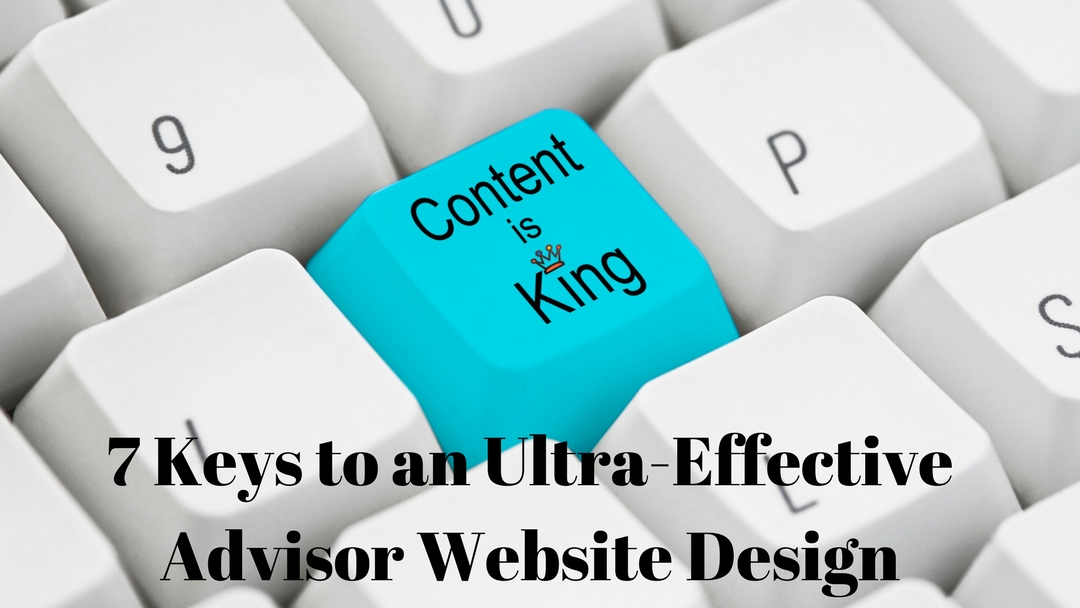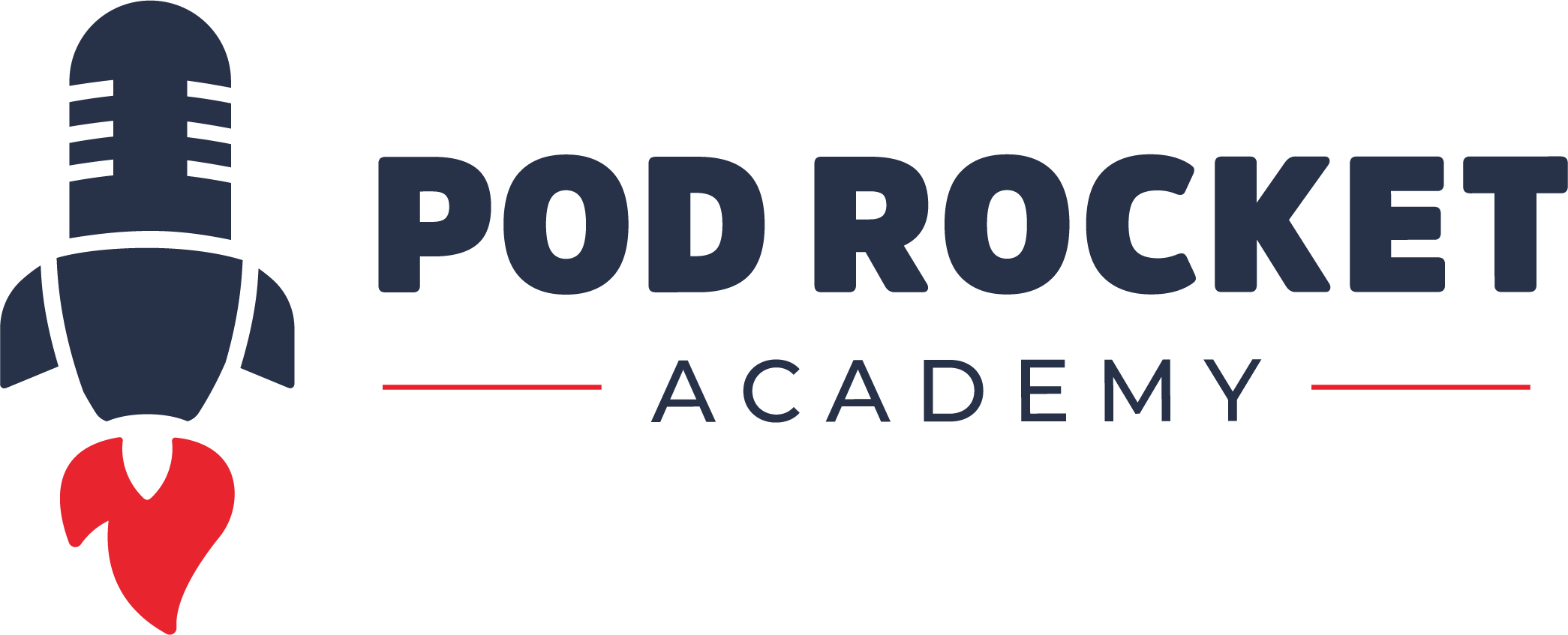Effective Advisor Website Design
No doubt, you’re well aware that your financial advisor website is an opportunity to make a first and lasting impression with your audience. What eludes most advisors regarding their website design is the winning formula to make it better than the average advisor website.
Here’s my formula for an effective advisor website design:
1) INTRIGUING STATEMENT
If you don’t sound different and better, investors and COIs will quickly dismiss you as a worthwhile choice. A few ideas…
- The first section of your website below your navigation menu should be dedicated to making a profound and clear statement about who you are, how you are different and what that difference means to your ideal audience.
- Each subsequent section/resource/call-to-action should support that statement – essentially proving it.
2) BRAND DEPTH
I wrote an article about Brand Depth, it’s absolutely critical these days to prove your brand versus simply saying, “I’m the best financial advisor in this niche”.
- Proof can come in several forms, including but not limited to: blog posts, papers, checklists, videos, published content, courses taught, podcasts, and/or infographics.
- Awards, educational background and credentials satisfied this requirement but they don’t specify and confirm depth of credibility. They don’t confirm niche expertise and audience relevance.
3) TIERED ENGAGEMENT TO START CLIENT EXPERIENCE
Engaging website visitors isn’t singularly about capturing their email address. Yes, once you have their email address you can continue a relationship by nurturing their interest, and invite them to connect socially. Engaging visitors starts the client experience. It triggers the muscle memory, “this advisor gets me, is giving of his/her wisdom and my first experience was valuable.” It’s the beginning of developing your brand and influencing them to work with you – or at least tell others about you.
- Tier 1 engagements are simple offers: sign up for blog feed or newsletter, download paper or checklist, watch video, listen to podcast, connect socially.
- Tier 2 engagements are getting them to act a second time. It could be moving them from paper to checklist. It could be getting them to say yes to a video course or webinar registration/replay. Oftentimes Tier 2 is a slightly larger commitment on the visitor’s part. The reward/value needs to be strong enough to deepen the emotional/logical connection they are building with you.
- Tier 3 engagements get them in front of you somehow. This could be a virtual meeting, having a coffee or meeting in your office. The more comfortable this engagement, the easier it will be for prospects to say yes.
4) MOBILE CENTRIC
It used to be “mobile-friendly” websites were an afterthought. Then they were a good-to-have. Now they are a must-have. In fact, your site should be equally developed to support mobile and desktop browsing.
“Responsive” websites remain the key mobile-ready standard. Testing for mobile-ready should be part of the initial development versus a desktop then mobile build.
5) MEANINGFUL GRAPHICS
When you’re deciding on website imagery it’s best to choose a theme and go with that.
Here are a few graphic strategies:
- Background imagery can set a tone without stealing the focus. A blurred out office shot with a plant in focus off to the side provides a simple, natural, honest look but doesn’t steal the focus away from your brand statement. It doesn’t say a lot but it does serve a specific purpose. It will likely also keep your photo selection time down.
- Purpose driven photo imagery can be impactful but it will take more time to find and agree upon, and there will often be drawbacks. You can go with your ideal audience’s age, but how do you best address their interests or ethnicity. Not everyone wants to sail, hike, ride a bike, or sit on the beach. Large fin-corps have very specific criteria for photo selection and usage. Oftentimes it’s audience driven. More often than not, I think this is a mistake large companies make, they, and their marketing department get caught up in audience photos and what the image says. It expands their search criteria, time and effort. It’s akin to the “meaningful logo” syndrome where advisors get too focused on explaining their value and brand in a logo. The more simple a logo is in design and message, the better. The simpler your imagery is, oftentimes, the better it is.
- The key is interesting and valuable choice for imagery. Vector imagery can be enhanced using light flare type imagery or brick walls, wood, whiteboard-type imagery. These can be easily introduced into other graphics in papers, logos, infographics, videos, icons and more.
Depending on your niche and message, aim for simple where possible. If you have the time and energy, purpose driven imagery can be impactful – but it’s not necessary and in some cases it’s not even better.
6) STICKY HOME PAGE
If your home page isn’t intriguing and simple, you’re done – end of story. Think about it. Your clients and COIs won’t refer you if the first thing their colleague sees is, “we’re just like everyone else”. Sticky home pages inspire referrals. I’ve seen it many times. And with the website tools available, there’s no excuse for not having a great home page full of intrigue, credibility, value and call-to-actions. Here are several considerations for home page “sections”:
- Brand statement should be your first section (after your navigation)
- Brand or audience reinforcement such as financial planning process, important questions, key niche planning challenges, key benefits
- Tier 1 engagement offer such as paper
- Latest 3-4 blog posts posted with imagery. I always recommend adding title of article or key phrase text to image – you’ll get more clicks/reads.
- Tier 2 engagement offer such as an upcoming webinar or video series about “5 Key Retirement Planning Oversights Your Bank Advisor Never Told You About” or “3 Advisor Biases That Kill Your Portfolio Growth”
- Social media profile links.
- Clear contact information if they want to move forward. Advisors and their content marketers can get so caught up in email capture strategies that they forget to make it easy to, “Call Us Today, Let’s Talk.”
- Access to podcasts or video where they can begin to experience your knowledge and personality with little effort required.
- A footer section that allows them to see and click on team members.
7) EASY CONTACT
It’s easy to get caught up in content marketing tactics and sections on your home page and to forget about making it easy for visitors to simply contact you. Make sure your phone number is cleary displayed and that they are provided with other options to email, phone or socially connect with you.
- Phone number displayed in upper navigation (not main menu).
- “Get Started” button or page with simple ways to connect.
- Contact Us page and section in footer.
- “Let’s Talk” button in top banner or sidebar.
- Be specific about what you will talk about or what they can expect when they contact you. “Let’s Meet For A Coffee” or “We’ll Review The 5 Mistakes Your Banker Never Told You About Retiring Well.”
A kick-ass home page is sticky, compelling, drives action and creates simple yet memorable experiences – the beginning of your brand and hopefully many profitable and rewarding relationships. Your home page really sets the table for an effective advisor website design.
Stay with me and my blog as I continue this narrative – successful tips and tactics you’re your advisor marketing strategy.





